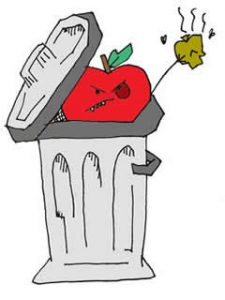Taking Down the Trash
 NCSU student helps save the planet by speeding up decomposition
NCSU student helps save the planet by speeding up decomposition
Submitted by: Eleanor Spicer – Staff Writer – Technician
Reprinted with permission
Fiber and polymer science PhD candidate Brandi Keene is saving the planet – one fiber at a time. What is she doing? “Modifying polyolefin polymers on the surface with atmospheric plasma and gamma radiation to observe if degradation occurs,” Keene explains. Wait . . . What?
Despite the science-fiction-sounding explanation, Keene and her research team are working to make materials called polyolefin nonwovens decompose more quickly in the environment. Polyolefin nonwovens are ubiquitous, but are used in applications generally not considered by the average consumer. In addition to hospital gowns, polyolefin nonwovens can be used in “wipes, protective mask[s], hospital drapes, filters, surgical dressings, shoe linings, bags, automotive linings, and the list goes on,” said Keene. Unfortunately, polyolefin nonwovens are not biodegradable.
According to Heather Monackey, a public relations representative at Wake Medical center, the facility uses 1,900 hospital gowns a day. That amounts to nearly 70,000 hospital gowns a year in that facility alone, gowns that will eventually make their way to an incinerator. Incinerating hospital equipment can be dangerous for the environment. “Harmful emissions of gas pollutants” can be released into the environment, explains Keene, “which can be damaging to humans and plant life.” By promoting biodegradation, or the chemical breakdown of materials, these products can be composted instead.
There are two steps to biodegradation: degradation and biodegradation. In degradation, the first step, materials are made susceptible to attack by microorganisms, which in turn begin consuming the material. In the case of polyolefin fibers that naturally are not susceptible to attack by microorganisms, Keene modifies their surface with additives, atmospheric plasma and radiation.
Keene then feeds the fibers to worms to see if their modified state is biodegradable. NCSU Fiber and Polymer Science Professor Richard Kotek explains, “If the worms like the material, then you can tell that’s biodegradation.” The compost made from the biodegraded material is environmentally safe, produced without the potentially harmful side effects of incineration. Baisically, worms and microorganisms turn garbage that would normally last indefinitely in the landfill into usable dirt.
Keene’s curiosity for “green” research stems from an internship with the United States Environmental Protection Agency, where she studied air quality in Detroit, Michigan. “After that experience, I developed quite an interest in environmental research, specifically waste disposal,” Keene said. She became interested in the fiber and polymer science program during a summer research experience at NCSU. “I studied different breeds of canine hair to be used in forensic studies,” Keen said.
Keene appreciates the positive effects of her research. “I can see the direct impact of my work on the environment,” she said. “Whether it’s preventing the release of harmful fumes into the environment from incineration, or simply decreasing the degradation time of waste, my research is providing a better place for the ecosystem.”
- Categories: